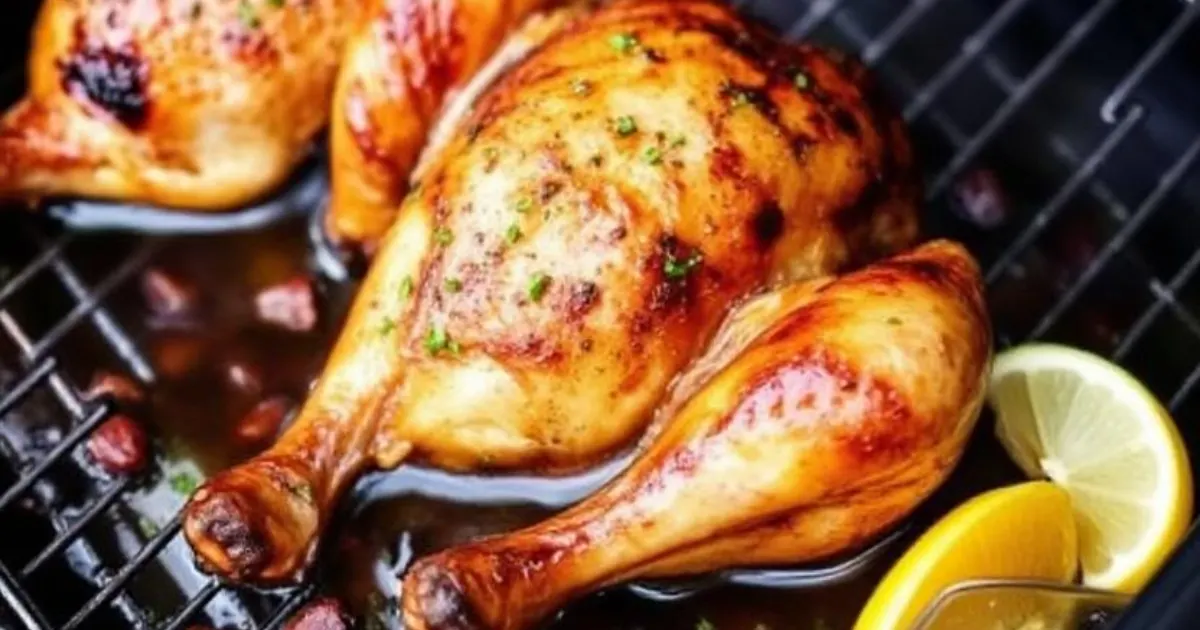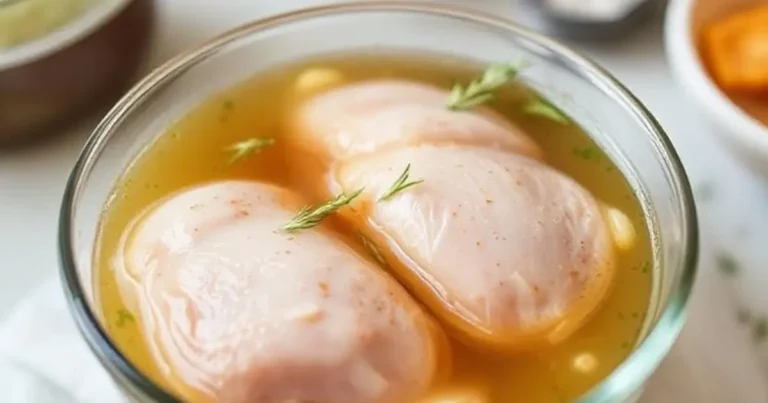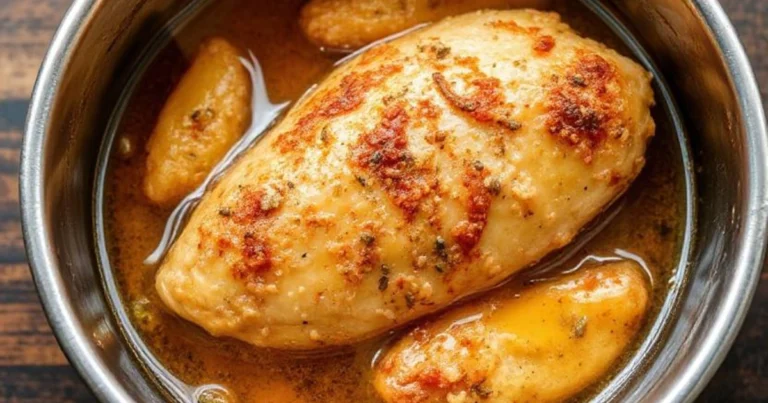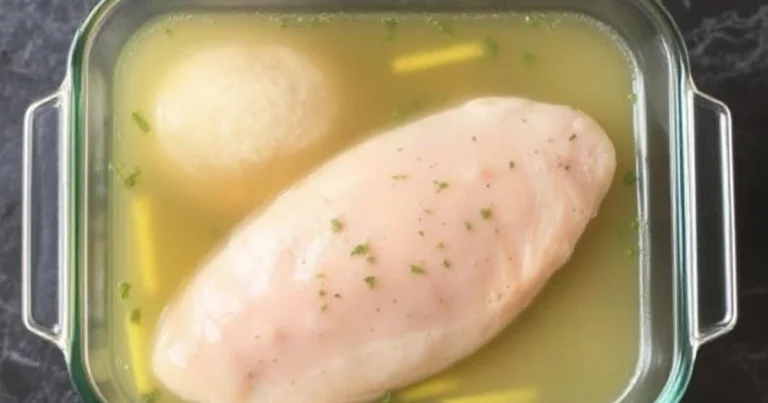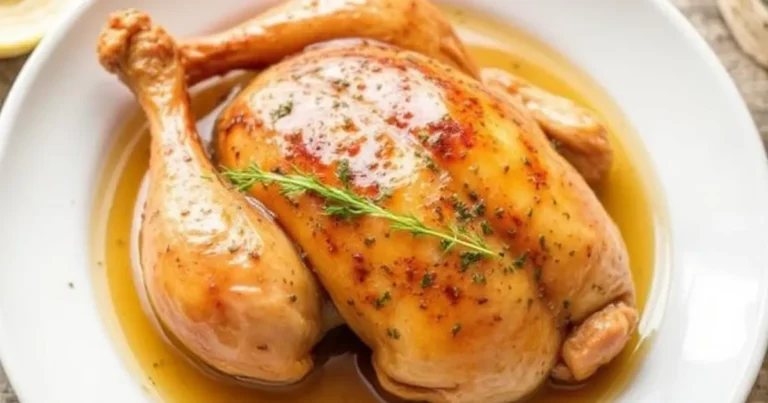Smoked Chicken Brine Recipe for Rich & Smoky Flavor
Unlocking the secret to mouthwatering smoked chicken starts with mastering the art of chicken brine. Professional pitmasters know that a well-prepared smoked chicken brine transforms ordinary poultry into a flavor-packed culinary experience. Your journey to creating perfectly seasoned, juicy smoked chicken begins with understanding how brining can elevate your cooking game.
A smoked chicken brine is more than just salt water. It’s a carefully crafted solution that penetrates deep into the meat, ensuring every bite is packed with incredible taste and moisture. Whether you’re a backyard grilling enthusiast or a serious barbecue lover, learning the right brining techniques will take your chicken from good to extraordinary.
Table of Contents
Understanding the Art of Chicken Brining
Chicken brining is a fascinating cooking method that turns regular chicken into a delicious treat. It’s a secret to making smoked chicken juicy and full of flavor. This technique will wow anyone who tries it.
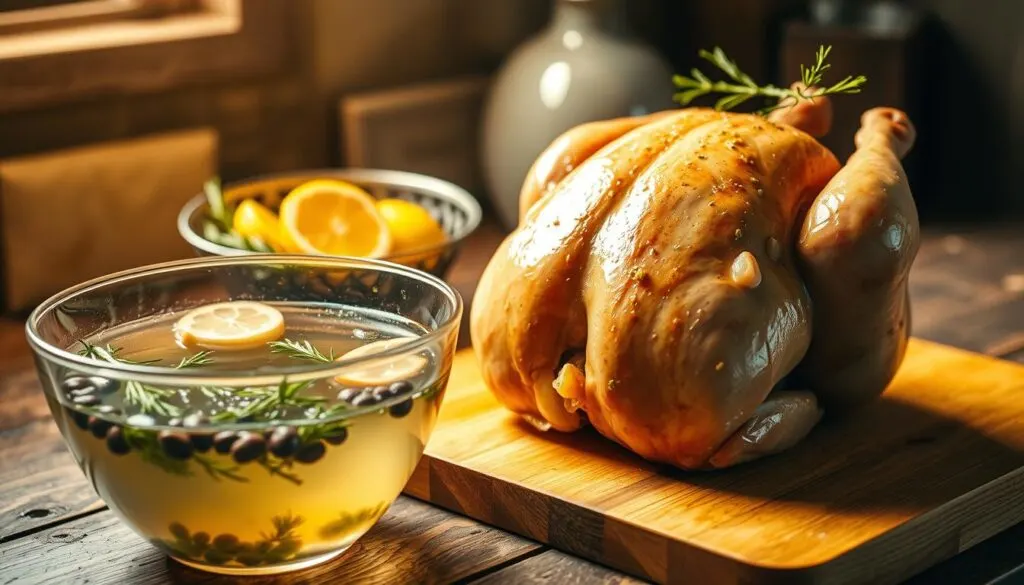
Science Behind the Brining Process
The brine recipe is not just salt and water. It’s a science that changes chicken’s texture and taste. Salt breaks down proteins in the chicken, making it absorb more moisture and flavor.
- Salt disrupts protein structures
- Water molecules are absorbed into chicken fibers
- Cellular membranes become more permeable
Benefits of Brining Before Smoking
A good brine recipe makes your smoked chicken tender and juicy. It also adds a lot of flavor. This step helps your chicken taste amazing.
| Brining Benefit | Impact on Chicken |
|---|---|
| Moisture Retention | Increases juiciness by 30-40% |
| Flavor Absorption | Enhances taste throughout meat |
| Protein Tenderization | Softens muscle fibers |
How Salt Penetrates the Meat
Salt’s journey through chicken meat is fascinating. Ionic interactions help salt break down proteins. This makes the chicken absorb more moisture and flavor, making every bite delicious.
Essential Ingredients for Perfect Smoked Chicken Brine
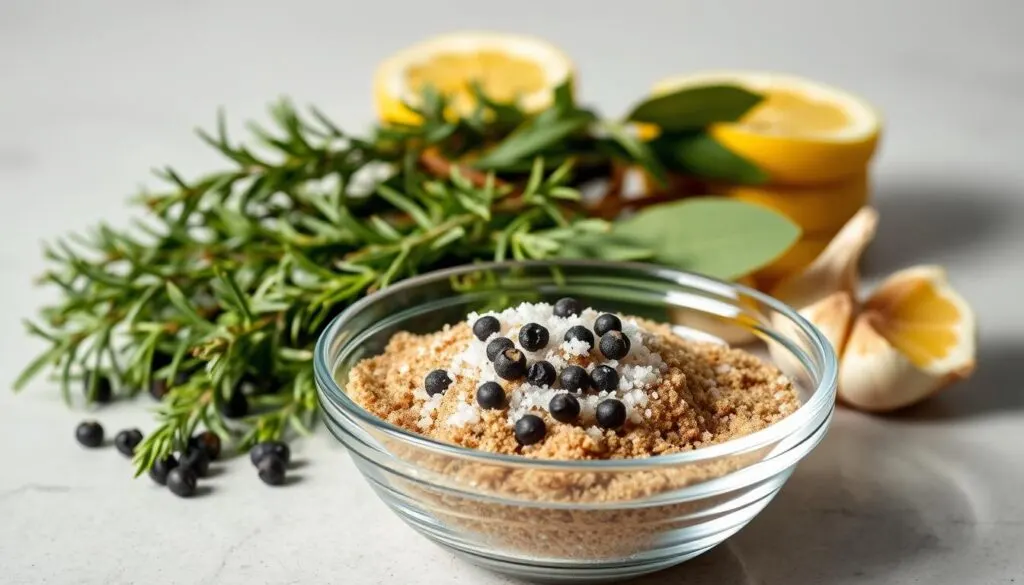
To make a tasty smoked chicken brine, you need to pick the right ingredients. This mix will turn plain chicken into a flavorful dish that’s hard to resist.
The base of a great brine is salt and water. Use kosher salt for brining chicken breast. It dissolves well and seasons evenly.
- Kosher salt (primary seasoning agent)
- Filtered water
- Brown sugar or white sugar
- Fresh herbs
- Aromatics like garlic and onion
Sugar is key in your brine. It balances the salt and helps the chicken brown nicely while smoking. Try different sugars to find your favorite taste.
| Ingredient | Purpose | Recommended Quantity |
|---|---|---|
| Kosher Salt | Seasoning and moisture retention | 1 cup per gallon of water |
| Brown Sugar | Flavor balance and browning | 1/2 cup per gallon |
| Fresh Herbs | Aromatic enhancement | 2-3 sprigs per batch |
Quality matters when making your brine. Use fresh herbs, good salt, and clean water. This will make your chicken truly special.
“The secret to incredible smoked chicken is in the brine” – Professional Pit Master
Remember, different chicken parts might need different brining times. Chicken breasts, being leaner, might need less time to avoid being too salty.
Step-by-Step Smoked Chicken Brine Recipe
Making the perfect chicken brine is an art. It turns regular chicken into a delicious treat. Follow this guide to make a brine chicken recipe that ensures juicy, flavorful smoked chicken every time.
Crafting Your Base Brine Solution
The base of a great chicken brine is the right mix. You’ll need to mix key ingredients. These help your chicken stay moist and soak up amazing flavors.
- Water: 1 gallon of cold water
- Kosher salt: 1 cup
- Brown sugar: 1/2 cup
- Ice: 2-3 cups to keep solution cold
Elevating Flavor with Aromatics
Add aromatic ingredients to your brine to boost flavor. These will give your meat a rich taste.
- Fresh garlic cloves (crushed)
- Whole peppercorns
- Fresh rosemary sprigs
- Lemon zest
Preparing Your Chicken for Brining
Getting your chicken ready for brining is key. Make sure it’s clean, dry, and ready to soak up the flavors.
- Rinse chicken thoroughly
- Remove giblets
- Pat chicken completely dry with paper towels
- Place in a non-reactive container
Remember, patience is important when brining chicken. Let the salt and seasonings soak into the meat. This will make your chicken tender and full of flavor, impressing all barbecue lovers.
Best Brining Times and Temperature Guidelines
Learning how to brine chicken breast is all about time and temperature. It’s a mix of art and science. The right guidelines make your chicken juicy and full of flavor.
Different chicken pieces need different brining times. Smaller cuts like breasts brine for 2-4 hours. Larger pieces, like whole chickens, brine for 8-12 hours.
- Chicken breasts: 2-4 hours
- Whole chicken: 8-12 hours
- Chicken thighs: 4-6 hours
- Chicken wings: 1-2 hours
Keeping the temperature right is key. Your fridge should be between 34°F and 40°F. This stops bacteria and helps the chicken soak up flavors.
| Chicken Cut | Brining Time | Recommended Refrigerator Temperature |
|---|---|---|
| Chicken Breasts | 2-4 hours | 36-38°F |
| Whole Chicken | 8-12 hours | 34-40°F |
| Chicken Thighs | 4-6 hours | 36-38°F |
The size of the chicken affects brining time. A good rule is 1 hour of brining per pound of meat. Use a timer to avoid over-brining, which makes the meat too salty.
Pro tip: Pat your chicken dry after brining to ensure crispy skin and maximum flavor absorption.
Smoking Techniques for Brined Chicken
To make your smoked chicken brine a hit, you need to master smoking. The right methods can turn your chicken into a dish that’s both tasty and perfectly cooked.
Once you’ve made your brine, smoking is key to getting that perfect flavor. Your choice of wood, how you control the temperature, and keeping an eye on the smoke all matter a lot.
Selecting the Perfect Smoking Woods
Each wood type gives your chicken a unique taste. Here are some top picks:
- Apple wood: Mild and sweet flavor
- Hickory: Strong, classic smoky taste
- Cherry: Subtle, fruity undertones
- Pecan: Rich, nutty essence
Temperature Control Mastery
Keeping the temperature steady is key for great smoked chicken. Aim for 225-250°F to cook evenly and keep the chicken moist.
| Chicken Type | Ideal Smoking Temperature | Estimated Cooking Time |
|---|---|---|
| Whole Chicken | 225-250°F | 3-4 hours |
| Chicken Pieces | 250°F | 1-2 hours |
Monitoring Smoke Levels
It’s important to manage the smoke well to avoid a bitter or too smoky taste. Look for thin blue smoke – it should be just visible and steady.
Pro tip: Start with a little smoke and add more as needed. You want to enhance the chicken’s flavor, not mask it with too much smoke.
Common Brining Mistakes to Avoid
Mastering the chicken brine recipe needs careful attention and knowledge of common mistakes. Many home cooks face issues that can ruin their smoked chicken.
The right amount of salt is key for a great chicken brine. Too much salt makes it too salty, while too little makes it taste bland. Always use kitchen scales to measure salt accurately.
- Avoid using reactive containers that can interact with the brine solution
- Ensure complete chicken submersion during the brining process
- Monitor brining time carefully to prevent over-salting
- Use non-reactive containers like glass or food-grade plastic
Keeping the brine at the right temperature is also important. Your chicken brine should stay between 34-40°F. This stops bacteria from growing.
| Common Brining Mistake | Potential Consequence | Prevention Tip |
|---|---|---|
| Over-brining | Mushy texture | Follow recommended brining times |
| Incorrect salt ratio | Overly salty meat | Use precise measurements |
| Warm storage | Bacterial growth | Refrigerate during brining |
Knowing these common mistakes helps improve your brine chicken recipe. Being patient and precise is crucial for a perfectly brined, smoky chicken. It will surely impress your family and friends.
Flavor Variations and Seasoning Combinations
Take your smoked chicken brine to the next level by trying new flavors. Learning how to brine chicken breast with special seasonings can make your meals stand out. It will also wow your guests.
Your smoked chicken brine is a blank canvas for creativity. Different flavors can change the taste of your chicken. This makes each dish a new adventure.
Herb-Infused Brines
Fresh herbs can really boost your smoked chicken brine. Here are some great combos:
- Rosemary and garlic for an earthy Mediterranean twist
- Thyme and lemon for a bright, citrusy profile
- Sage and black pepper for a robust, rustic flavor
Spicy Brine Options
For a spicy kick, try these brines:
- Chipotle peppers for smoky heat
- Jalapeño and cayenne for intense spiciness
- Red pepper flakes for subtle warmth
Sweet and Savory Combinations
Combining sweet and savory can create amazing flavors in your brine:
- Honey and apple cider for a sweet-tangy blend
- Maple syrup and bourbon for rich depth
- Brown sugar and mustard for a caramelized finish
When making your brine, remember to find the right balance. Start with a little of each ingredient and adjust as needed.
Storage and Food Safety Tips
Keeping food safe is key when making chicken brine. Your health depends on how you handle and store it. This is true whether you’re making a brine for smoking or frying.
Refrigeration is vital for keeping chicken brine safe. Always keep your brined chicken and raw chicken below 40°F (4°C). This stops harmful bacteria from growing, which can be dangerous.
- Store raw brined chicken in a sealed container on the bottom shelf of your refrigerator
- Never leave chicken brine at room temperature for more than 2 hours
- Use clean, sanitized containers and utensils when handling chicken brine
- Discard used chicken brine after initial use to prevent cross-contamination
Handling fried chicken brine needs extra care. Always wash your hands thoroughly before and after handling raw chicken. Use separate cutting boards and clean surfaces right away after touching raw poultry.
“Safe food handling is not just a recommendation, it’s a necessity for protecting your health and your family’s well-being.” – Food Safety Expert
Here are more tips for storing brined chicken:
- Refrigerate brined chicken for no longer than 2 days before cooking
- If freezing, wrap tightly to prevent freezer burn
- Thaw frozen brined chicken in the refrigerator, never at room temperature
By following these food safety tips, you can make delicious and safe chicken dishes every time.
Conclusion
Learning to brine smoked chicken turns regular chicken into a gourmet dish. You’ve discovered how simple steps can boost flavor and texture. With the right brine recipe, you can cook like a pro in your own kitchen.
Every brine recipe is a chance to try new things and make it your own. You’ve learned about salt, flavor, and keeping food safe. This knowledge helps you make juicy, tasty chicken that everyone will love.
Don’t forget, practice is key. You now know how to brine, opening up a world of cooking possibilities. Whether it’s a quick dinner or a big event, your skills will make your chicken stand out. Be creative, trust the process, and enjoy trying new flavors.
A great smoked chicken brine is about knowing your technique, using quality ingredients, and letting your passion show. Your kitchen is now a place for tasty experiments.
FAQ
What is the primary purpose of brining chicken?
Brining makes chicken juicy and flavorful. It helps keep the meat moist and tender. This is especially true when cooking by smoking, grilling, or frying.
How long should I brine chicken breasts?
Brine chicken breasts for 30 minutes to 2 hours. Over-brining can make the meat too salty and mushy. The exact time depends on the chicken’s size and thickness.
What is the ideal salt-to-water ratio for a chicken brine?
Use 1 cup of salt for every gallon of water. Choose kosher or sea salt for better flavor and even seasoning. Table salt is not recommended.
Can I add additional flavors to my chicken brine?
Yes! Add garlic, herbs, peppercorns, citrus zest, or sugar to your brine. These ingredients enhance the flavor of the chicken during brining.
Is it safe to brine chicken at room temperature?
No, brine chicken in the refrigerator to avoid bacterial growth. Keep the temperature below 40°F (4°C) for food safety.
How does brining affect different cooking methods?
Brining works well for smoking, grilling, roasting, and frying. It keeps the chicken moist and flavorful, no matter how you cook it.
Can I reuse a chicken brine?
No, don’t reuse chicken brine. It can be contaminated with bacteria from raw chicken. Always make a fresh brine for each batch.
What type of salt works best for brining?
Use kosher salt for its clean flavor and easy dissolving. Avoid iodized table salt, as it can give a metallic taste and affect the brine’s quality.
How do I know if I’ve over-brined my chicken?
Over-brining shows as very salty meat, a mushy texture, and a loss of natural flavor. Follow recommended times and salt amounts to avoid these problems.
Can I brine frozen chicken?
Thaw chicken before brining. Brining frozen chicken can cause uneven salt absorption and safety issues. Always thaw chicken in the fridge before brining.

